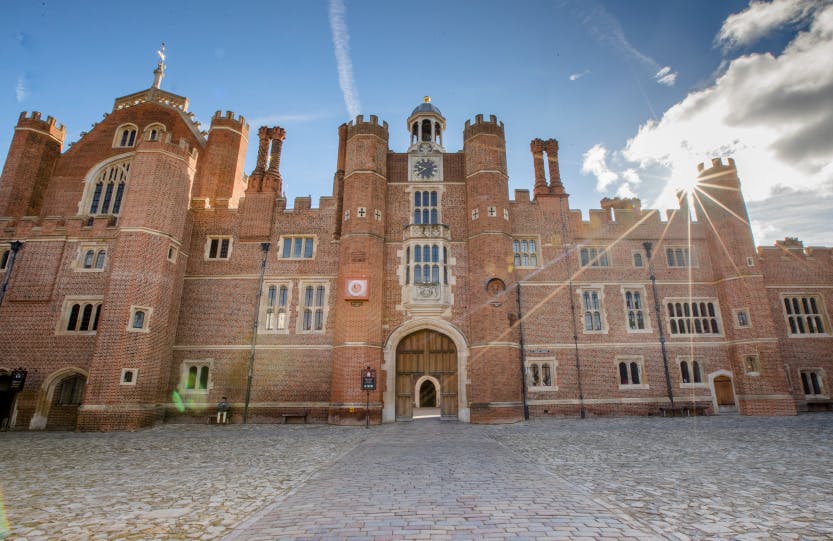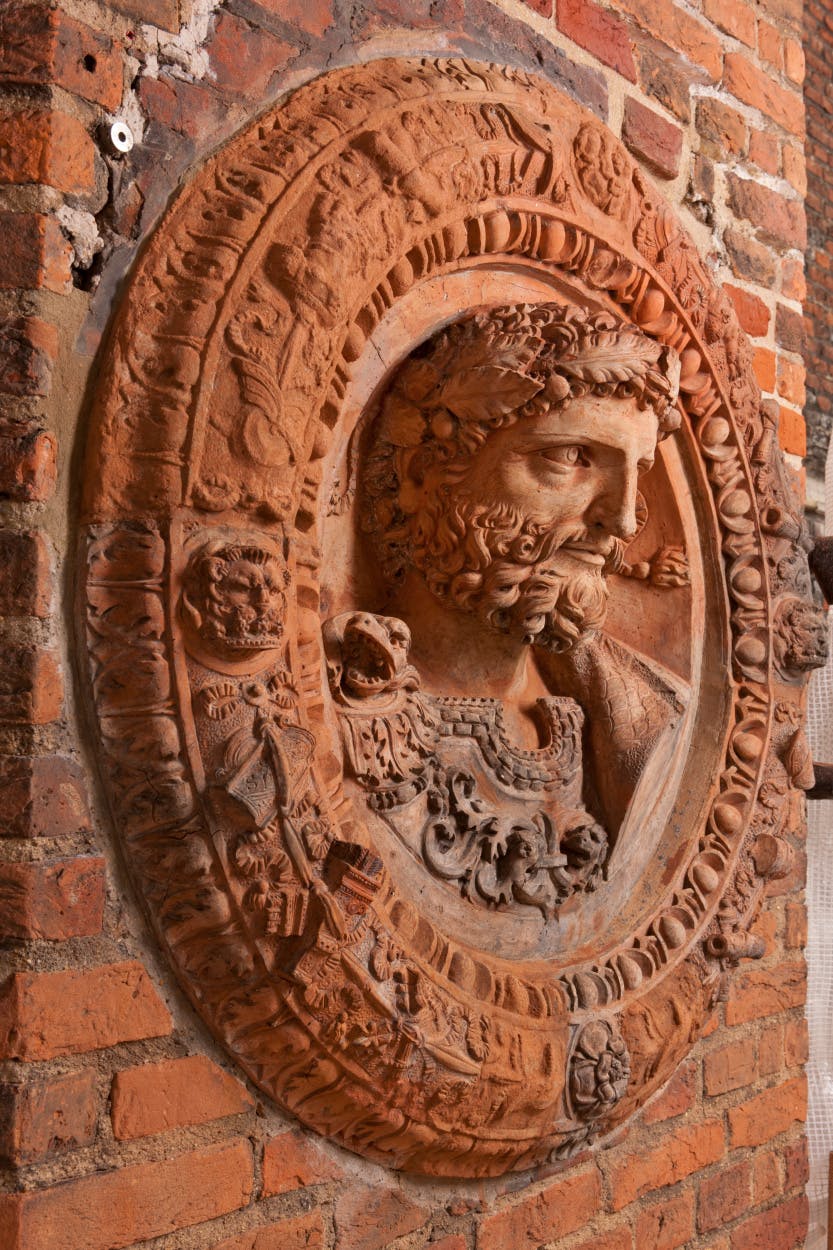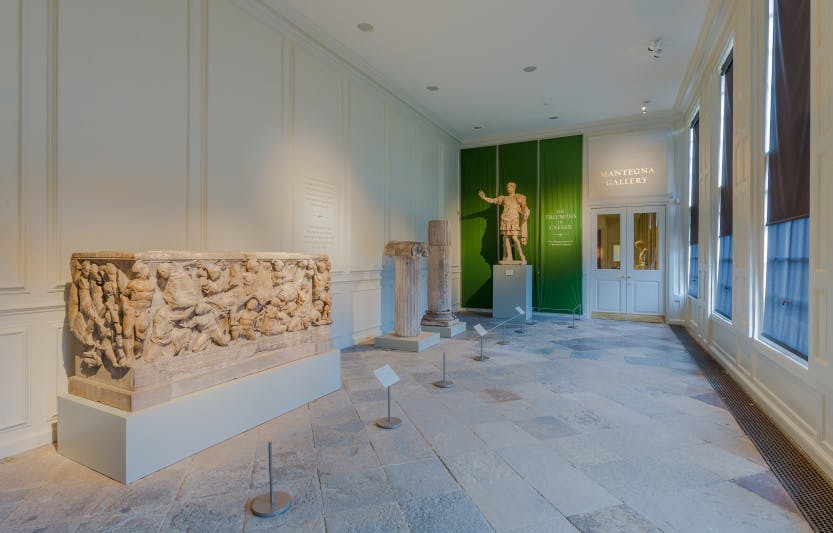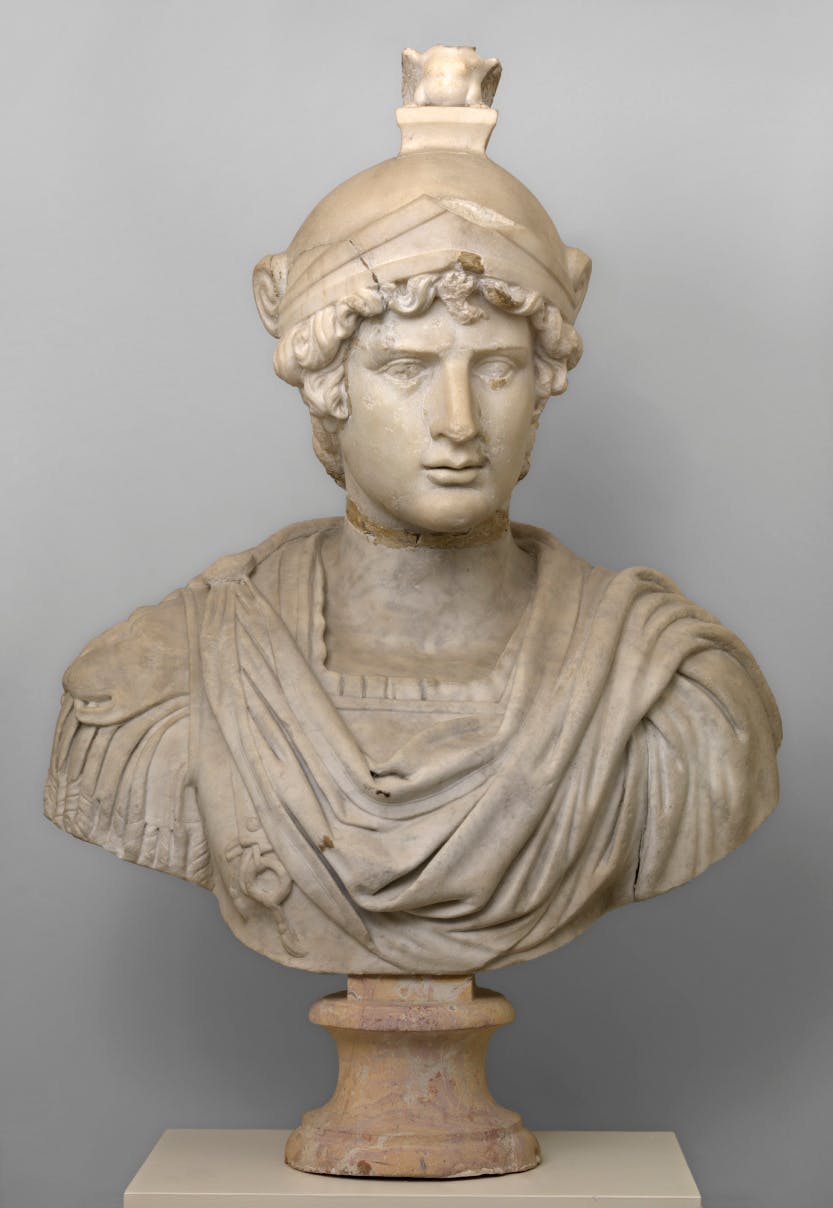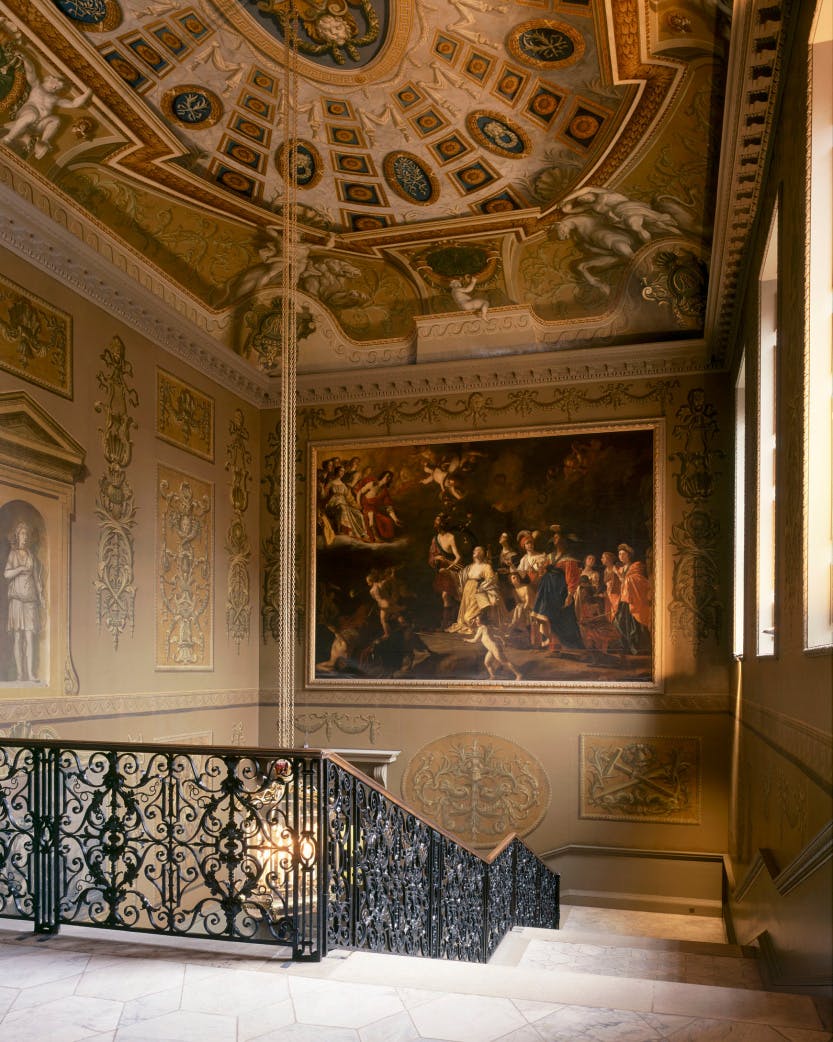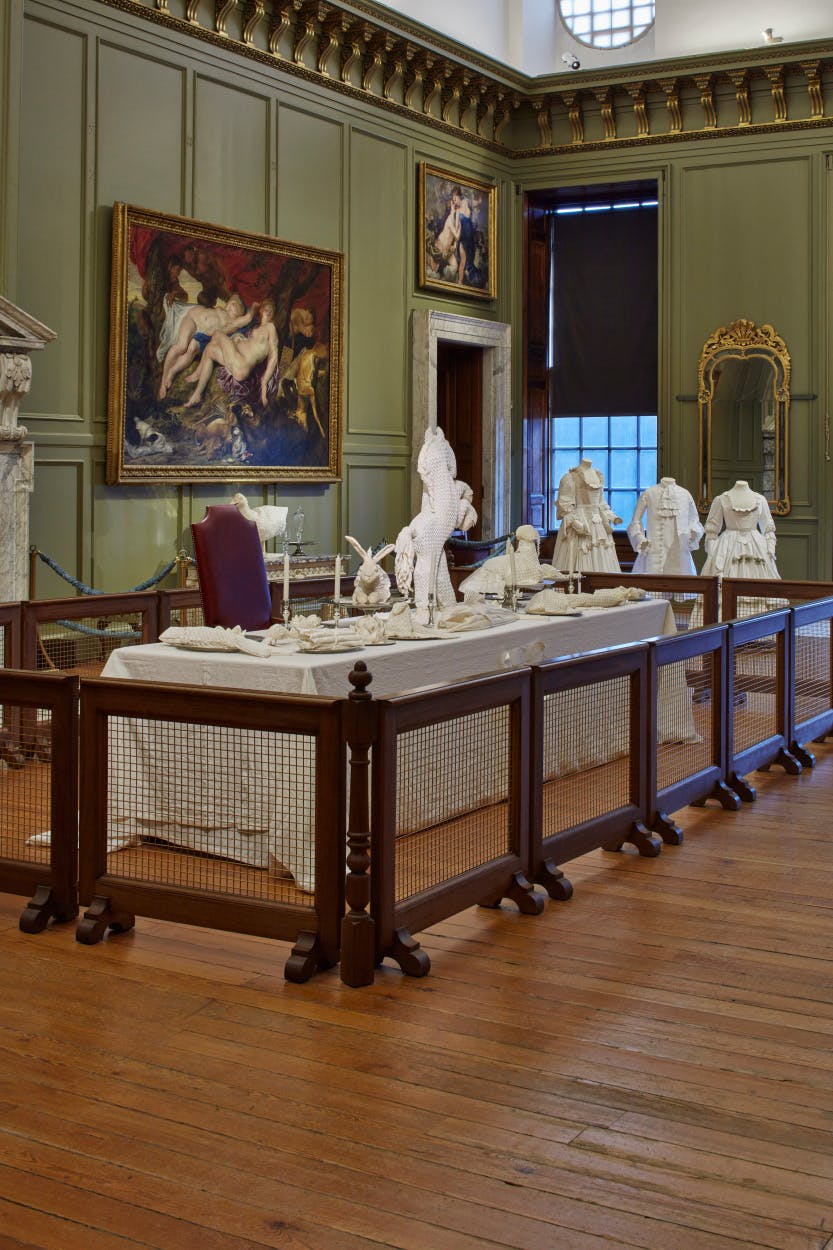Wherever and whenever you look in human history, you will find LGBTQ+ lives. In the last few years, we have told many stories of same-sex love and desire and non-binary gender identities among the people who lived, worked and loved in our palaces. But queer stories run even deeper than that. They are built into the stones and are hanging on the walls of the buildings themselves.
When you next visit Hampton Court Palace, I have a challenge for you. Bring a queer eye to the palace. Shift your perception. Actively look around you. I promise there is a rich history to find.
To start you off, here is my queer walk through Hampton Court Palace.
Hadrian and Antinous
We start just inside the main entrance, in Base Court. In the turret of Anne Boleyn's Gateway is Giovanni da Maiano's terracotta portrait of the ancient Roman emperor, Hadrian. When commissioned by Cardinal Wolsey, it was a striking piece of Italian-style modern art adorning his newly built English palace. Part of a set of portraits of emperors, Wolsey no doubt saw Hadrian as a classical exemplar of a great ruler, but Hadrian was also half of one of the most famous same-sex couples in history. The married emperor was in his forties when he met and fell in love with the teenage Antinous in about 123 AD. As a partnership between an older man and his younger social inferior, the relationship was acceptable to Roman society.
If you'd like to see the face of the youth the emperor loved, then take a detour, and head to the Mantegna Gallery.
Greeting you in the first room is an enormous sculpture of Hadrian, and just through the door is a portrait of his lover.
A close look at the sculpture gives a clue to the end of this love story. On Antinous' helmet are the broken remains of an Egyptian sphinx. In AD 130, shortly before his 20th birthday, Antinous drowned in the Nile. In the words of an ancient source, Hadrian 'wept like a woman' at the death of his lover. Hadrian's profound grief can be seen in the steps he took to immortalise Antinous. He declared Antinous a god, built a city in his name and declared that a new star in the sky was the soul of the lost young man. The bust at Hampton Court Palace is just one of many ancient examples of portraits of Antinous made after his death, as Hadrian spread the image of his great love across the empire.
George Villiers
Now we'll return to Base Court, and take a short walk across Clock Court to the next stop on our tour, The Queen's Staircase.
This room is designed to make you stop and stare, a first taste of the impressive royal apartments to follow. Decorated for Queen Caroline in 1734, it features an older painting, Gerrit van Honthorst's Apollo and Diana of 1628. The mythological title hides the painting's true meaning, because this painting is really about the politics of the Stuart court. Apollo is actually King Charles I, and Diana, Queen Henrietta Maria, and in the centre, dressed as the god Mercury, is George Villiers, 1st Duke of Buckingham.
George Villiers rose from his modest birth as the seventh child of a respectable Leicestershire knight to a dukedom and the position of Lord High Admiral, thanks to his relationship with James VI and I. Like the older Hadrian for Antinous, the 48 year old James was attracted by the good looks of the 22-year-old Villiers when they met in 1614. Honthorst's painting shows off the physique of 'the handsomest bodied man of England', as Villiers was described. People at the time, and many since, have believed that James and Villiers' relationship was physical, and that Villiers achieved his position as royal favourite thanks to his sexual relationship with the King.
This painting tells us a lot about Villiers' power. Aged 35 when it was painted, Villiers had maintained his position at court in the reign of James' successor, Charles I. He assumed the role of the loyal older brother to the younger king. The action of the painting revolves around the Duke as he leads figures representing the subjects studied by an educated gentleman, such as Grammar, Astronomy and Arithmetic, out of the darkness at the right. Meanwhile, the tormented figures and the goat, representing vices such as envy and lust, are driven out at the bottom left. Villiers is rewarded for his efforts to promote good over evil with by being strewn with heavenly roses. However, we should never think that the favourite wields his own power, that would be getting above his station. No, he wields the power given to him by the King, and Charles reaches down from his lofty throne in the clouds to the loyal Villiers.
Before we leave this painting, and its glimpse into the queer sexual power dynamics of the Stuart court, we need to remember that power, especially when given for favour rather than merit, breeds discontent. In the year this painting was made Villiers was assassinated, stabbed in the chest exposed so enticingly by the artist. His killer was a sailor, disgruntled by Villiers' poor performance as Lord High Admiral.
An Erotic Mythology
Our final stop on our tour is harder to spot. It is a small painting hung above a door in the Queen's Public Dining Room, a few rooms into the Queen's State Apartments.
It is worth craning your head to have a look, because it tells us a lot about finding queer experience in the evidence left to us by history. The true subject of this painting of two barely dressed women is no longer known, but they may be characters from classical mythology.
We may not know their story, but their entwined limbs, interlocked gaze and lips that look as though they are about to kiss, suggest an intense sexual connection.
While the artist, Pietro Liberi, painted many religious paintings, he was in demand with collectors for his sensual erotic paintings. He even gained the nickname 'Libertino', perhaps thanks to this reputation. An online image search for his art reveals painting after painting of sensual female bodies, often together, in images of soft-core titillation.
As historians of queer identity, paintings like this present us with a problem, because this is female sexuality depicted by a man, no doubt for his male patrons. It does not give us a female perspective on attraction between women in a way that a letter written from one woman to another does. For these reasons, I questioned whether I should include it in my queer walk through Hampton Court Palace. I'd like to describe to you why I think it should be here, and you can decide whether or not you agree.
Finding any evidence for attraction between women in the past is difficult. Women did not leave written records in the same quantity as men did. Passionate letters such as that between Queen Mary II and Lady Frances Apsley have been read by historians as evidence of close friendship as much as a romantic attraction. Male same sex activity can be traced in legal records as it was criminalised and prosecuted. Sex between women occurs in legal records far less often. Where it does, it is often in the context of women dressing and living as a men, so it can be hard to interpret whether these are histories of sexual or gender identity. Legal records also only tell us when something went wrong, and miss the lives and loves of people who existed happily, or were not interrupted through discovery. Too often with the history of same-sex desire between women, it can feel that we are searching for a history that has been lost to us. If you're familiar with Sarah Waters' brilliant novel Tipping The Velvet, you will know that she found the title in a piece of 19th Century pornography describing sex between women. Although probably intended for a male readership, this erotic text was still a vivid piece of evidence of queer sex for Waters. The only way we can build up a picture of queer desire in the past is by putting all the different pieces of evidence we can find together, to attempt to recover a lost culture.
This mythological painting does tell us something about queer culture in the 17th Century. It tells us that erotic attraction and activity between women was not only understood, it was instantly recognisable to anyone who saw it. It could be depicted by a successful artist and hung on the wall of a palace. It was anything but anonymous and hidden. Instead of the suffering found in legal records, it shows sexual fulfilment and enjoyment. The love between these two women is as tangible to us today as it was when it was painted on canvas three and a half centuries ago. It is hanging on the wall of Hampton Court Palace, waiting for you to return to see it.
This is my queer walk through Hampton Court Palace. I hope you have enjoyed it. What will yours look like when we can open our gates again?
Matthew Storey
Collections Curator Historic Royal Palaces
More from our blog

Frances Stuart and Barbara Villiers
10 February 2023
Learn about the relationship between Frances Stuart and Barbara Villiers, two of the most influential women at the court of King Charles II.

The Real Norman Hartnell: Beyond 'Silver and Gold'
25 February 2022
February is LGBT+ History Month in the UK, which aims to increase the visibility of lesbian, gay, bisexual and trans (LGBT+) people through the exploration of their history and stories. Collections Curator Matthew Storey looks at one such story.
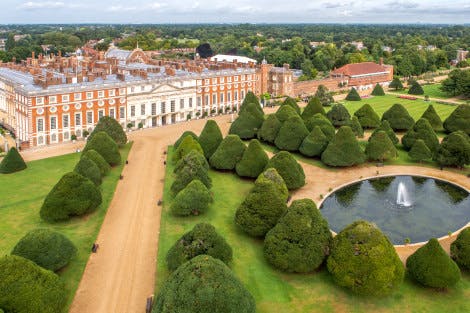
Sir Christopher Wren's Hampton Court Palace
08 March 2023
Head of Historic Buildings Daniel Jackson looks at one of Sir Christopher Wren's most famous and problematic projects: the remodelling of Hampton Court Palace.

